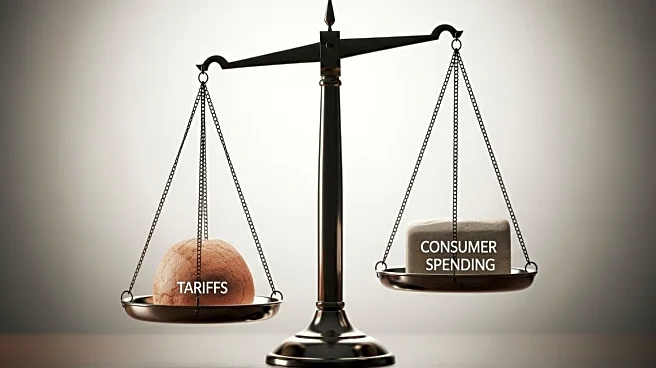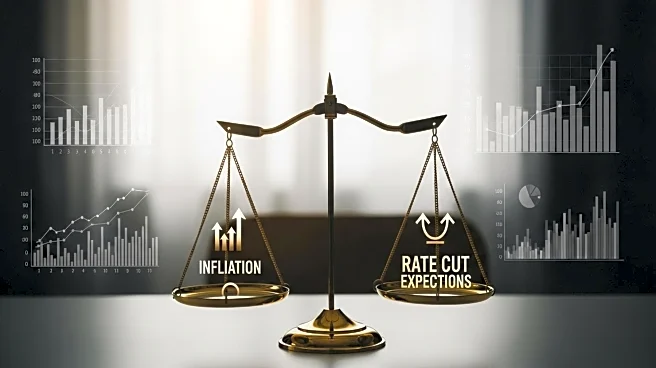What is the story about?
What's Happening?
The latest inflation data shows prices rose at an annual rate of 2.6% in July, with core inflation ticking up to 2.9%. Consumer spending increased by 0.5%, indicating resilience despite economic uncertainty. The data underscores the Federal Reserve's challenge in managing inflation while supporting the job market. Tariffs have not yet significantly impacted prices, but analysts warn of potential future effects. The Fed is expected to cut rates at its September meeting, with traders pricing in an 87% chance of this action.
Why It's Important?
The inflation data is crucial for the Federal Reserve's monetary policy decisions, impacting interest rates and economic growth. A rate cut could stimulate consumer spending and investment, but persistent inflation poses challenges. Industries reliant on consumer purchases may benefit, but the broader economy faces risks from inflation pressures. The Fed's actions will influence financial markets and economic forecasts, with implications for businesses and consumers.
What's Next?
The Federal Reserve is expected to proceed with a rate cut at its September meeting, aiming to balance inflation control with economic support. Policymakers will monitor consumer spending and inflation data closely, adjusting strategies as needed. The impact of tariffs on prices and economic activity will be a key focus, with potential implications for trade policy and international relations.
AI Generated Content
Do you find this article useful?















